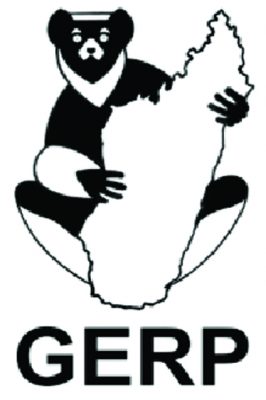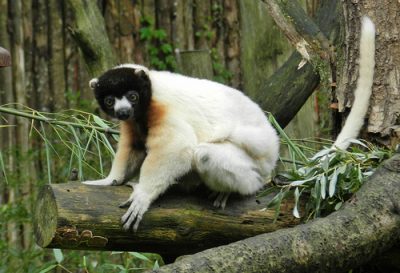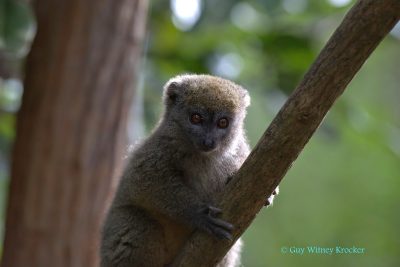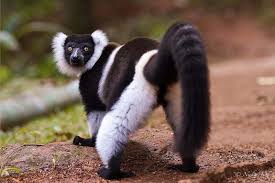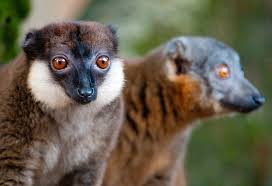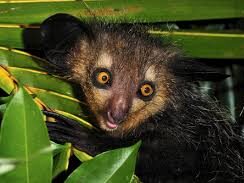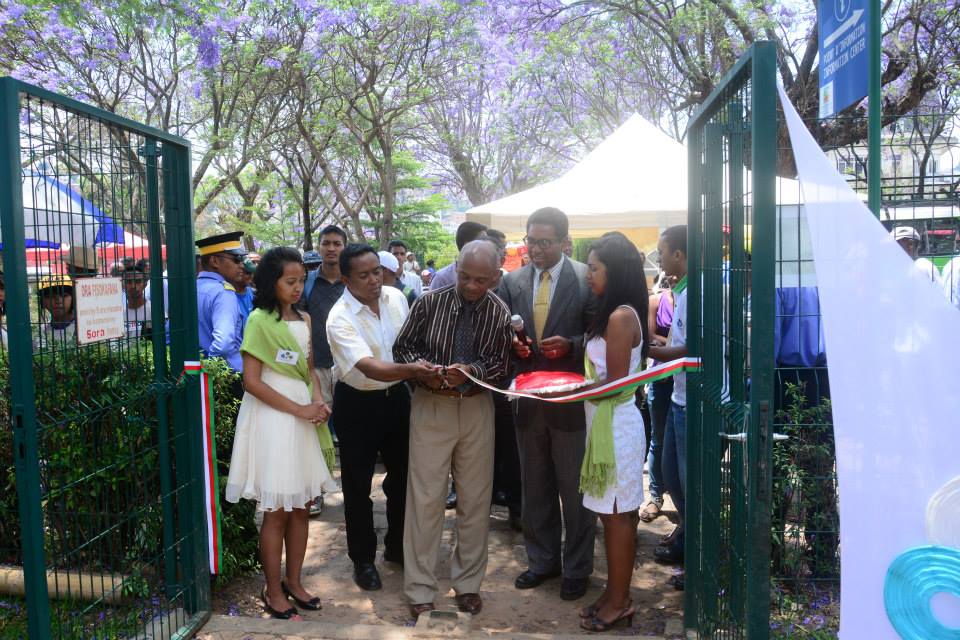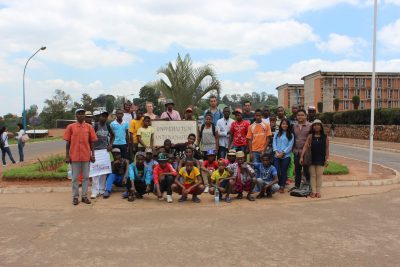Tell us a little bit about the history of GERP.
In 1994, ten Malagasy primatologists dedicated to protecting wildlife established a research institution in the form of an association called “Groupe d’Etude et de Recherche sur les Primates de Madagascar” (GERP). This organization has grown considerably and is now comprised of researchers, teachers, students, founding members, donors and consultants. Today, we have more than 111 members and 15 of them are foreigners.
The main goal of GERP is to share knowledge and skills in order to preserve biodiversity for future generations. GERP’s office is Madagascar – Antananarivo, 34 Fort-Duchesne City of Professors.
» Visit GERP’s website in French and English
Which lemur species do you work with?
GERP works with the Eulemur cineiriceps (Gray-headed Brown Lemur), Varecia variegata editorum (Black and White Ruffed Lemur), Hapalemur meridionalis (Southern Lesser Bamboo Lemur), Hapalemur alaotrensis (Lac Alaotra Bamboo Lemur), Propithecus coronatus (Crowned Sifaka), Lepilemur jamesorum (James’ Sportive Lemur), Daubentonia madagascariensis (Aye-aye), Avahi ramanantsoavanai (Ramanantsoavana’s Woolly Lemur), Cheirogaleus major (Greater Dwarf Lemur), and the Microcebus jollyae (Jolly’s Mouse Lemur).
- Crowned Sifaka
- Southern Lesser Bamboo Lemur
- Black and White Ruffed Lemur
- Gray-Headed Brown Lemur
- Aye-aye
How does GERP help lemur conservation?
Currently, GERP’s project framework is divided into four sectors: research and conservation, community health, livelihood development, and education.
Research and Conservation
Regarding research and conservation, GERP include constant monitoring of the endangered lemurs and reforestation projects are led by using only native tree seedlings.
Community Health
For community health, GERP work with ofices and doctors to provide free health consultations and basic treatment and care to the community, which lacks any healthcare infrastructure or staff.
Livelihood Development
GERP’s livelihood development activities are based on existing economic activities in the area, and we aim to help the community empower themselves economically. Examples of our livelihood development activities include training a women’s association on sewing techniques and vegetable farming.
Education
GERP’s Goal toward Education is to educate community youth about the natural resources in their immediate environment, especially lemurs and their habitat. We do so through environmental education.
What are some of your recent achievements?
GERP is now the official manager of the NAP Maromizaha (New Protected Area of Maromizaha) and conduct research and conservation activities in Manombo Farafangana (see Annual Report 2016)
Madagascar is only 0.4% of Earth’s surface but yet, more than 20% of primates in the world are found in the Red Island. We at GERP consider it our duty to invite you to know these extraordinary creatures and to ensure their protection so that they will thrive on our planet’s future.
That is why we want to spread our love and pride for these magnificent creatures across our Island and the world. We strive to promote lemurs as a national heritage that all Malagasy people can unite for.
Do you have volunteer opportunities at GERP?
Volunteers can provide new techniques on farming, but we also see volunteers on biodiversity monitoring and forest restoration in which we make use of new equipment (such GPS and drones for forest patrol). We also need doctors to help with our health activities.
What do you need donations for right now?
- Uniforms for the forest patrollers
- Vehicle
- Basic medicine for Malaria and mosquito nets
How to Help
- Contact GERP at gerp@moov.mg to learn more about donating
- Visit GERP’s profile page on the Lemur Conservation Network
- Visit GERP’s website in French and English
- Learn more about the World Lemur Festival, which was started in 2014 by GERP and celebrates lemurs in Madagascar and around the world.

